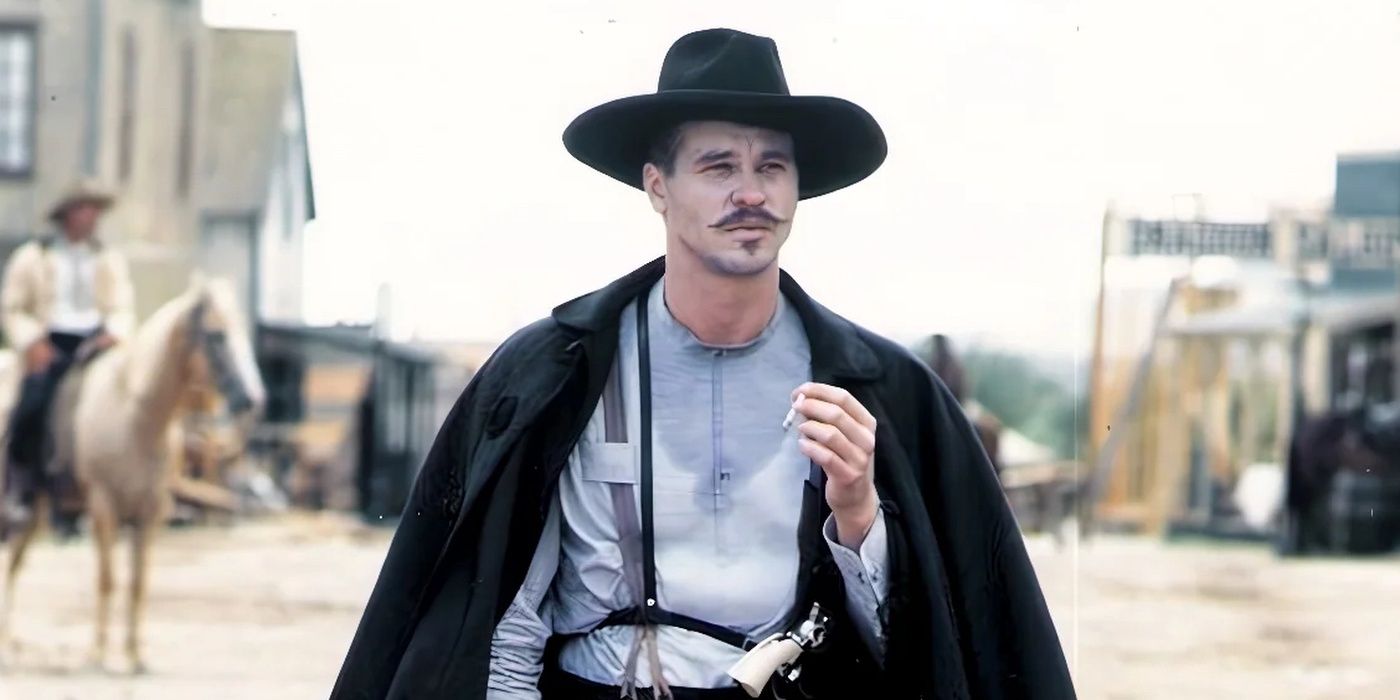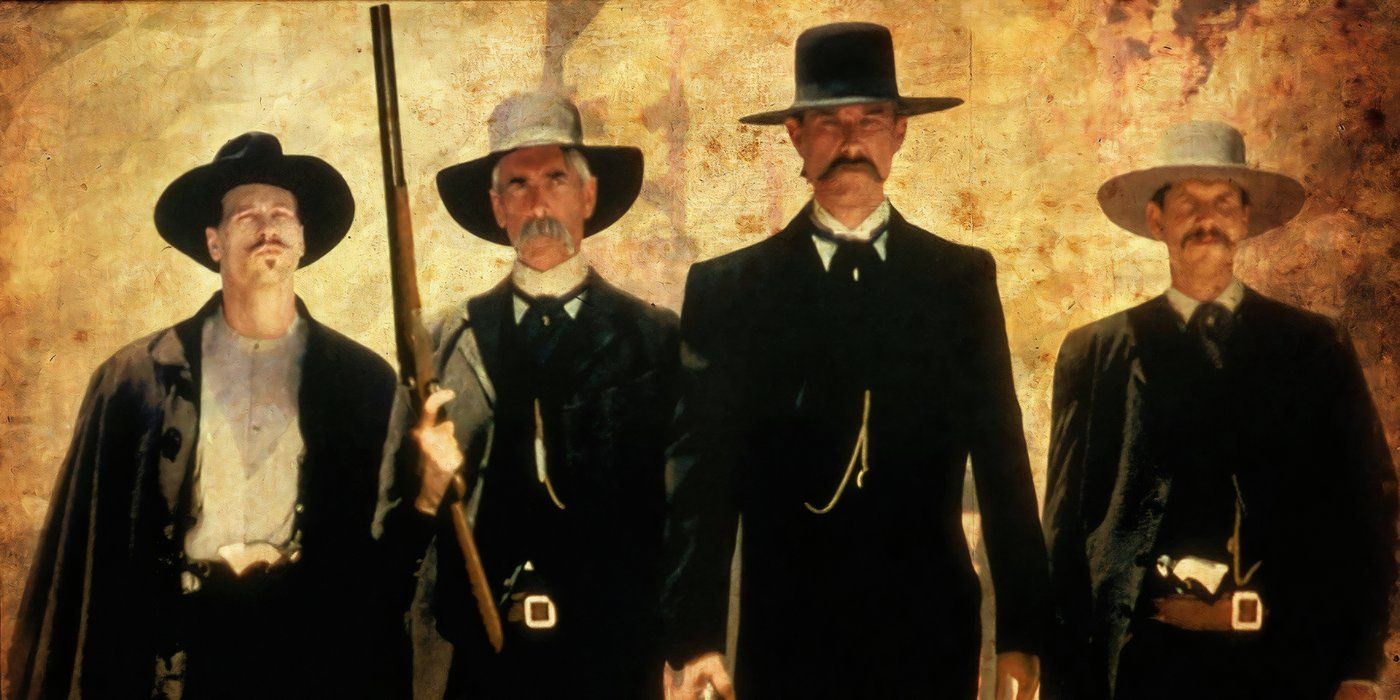Doc Holliday has long been a major character in the Western genre, portrayed in film and TV for decades by a rotating cast of leading men. From Kirk Douglas in Gunfight at the O.K. Corral to Stacy Keach in Doc and Dennis Quaid in Wyatt Earp, each version has tried to pin down the conflicts of a man who was both a Southern gentleman and a killer. But no performance has surpassed Val Kilmer’s turn in Tombstone, a portrayal that recast Holliday as a charming and oddly elegant figure.
That legacy is difficult to live up to, which may be why a 2017-announced biopic starring Jeremy Renner has yet to materialize. The project would have adapted Mary Doria Russell’s novels Doc and Epitaph, tracing Holliday’s journey from a Georgia dentist to the legendary gunslinger who fought alongside Wyatt Earp at the O.K. Corral. But despite the early excitement and bold proclamations about re-introducing the character to new audiences, the project has stalled indefinitely. And frankly, that may not be a bad thing.
The Untitled Doc Holliday Project Has Since Been Forgotten
When PalmStar Media announced in 2017 that Jeremy Renner would star as Doc Holliday in a new biopic, the news generated significant buzz. The film would have adapted Mary Doria Russell’s acclaimed novels Doc and Epitaph, which chronicle Holliday’s transformation from a Southern dentist to gunslinger. Renner, through his production company The Combine, was also attached as a producer alongside Don Handfield and Kevin Frakes. In a joint statement to Deadline in 2017, Renner and Handfield expressed their enthusiasm:
We are excited to re-introduce this classic American character to a whole new audience by chronicling Doc Holliday’s incredible transformation from Average Joe dentist to a man who Wyatt Earp called the ‘nerviest, speediest, deadliest man with a six-gun [he] ever knew.
Despite the initial excitement, the project has since stalled in development, with no significant updates or progress reported. The source material, however, offers an interesting portrayal of Holliday’s life. In Doc, Russell delves into Holliday’s early years, depicting him as a cultured man battling tuberculosis while journeying through the rough-and-tumble world of Dodge City. The novel explores his relationships, particularly with his partner Mária Katarina Harony, and his growing friendship with Wyatt Earp.
Epitaph continues the story, focusing on the events leading up to and following the infamous gunfight at the O.K. Corral. Russell covers the socio-political climate of the time, highlighting the tensions and vendettas that culminated in the 30-second shootout. The novel also sheds light on Josephine Sarah Marcus, Wyatt Earp’s partner, and her role in shaping his legacy.
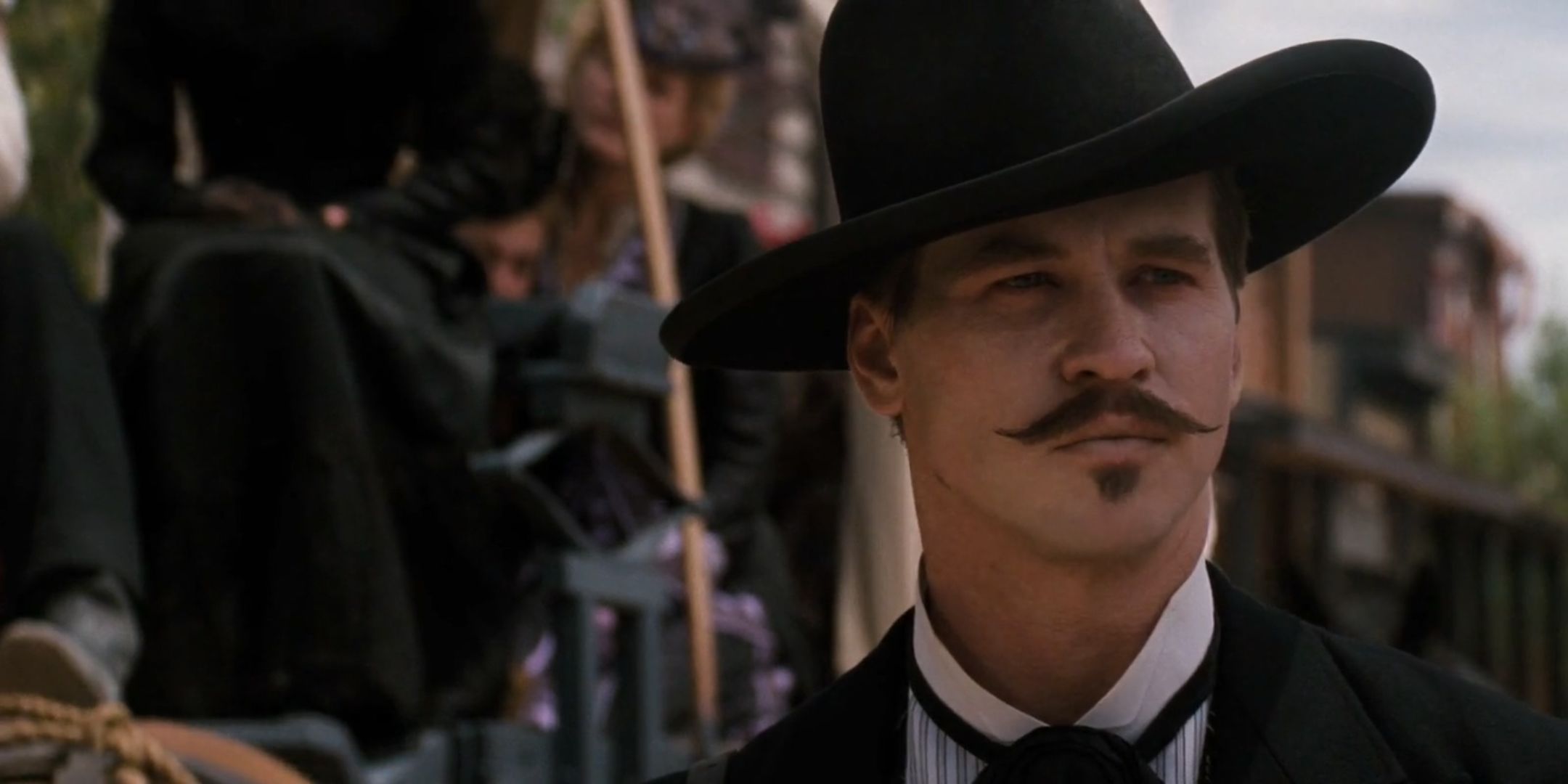
Related
Doc Holliday Is Far More Dangerous Than Tombstone Fans Realize (& This Blink-&-You’ll-Miss-It Moment Proves It)
In Tombstone, Doc Holliday proves he’s never too drunk to kill, showing lethal precision even while stumbling through the streets.
Mary Doria Russell’s Books Would be Difficult to Adapt
Mary Doria Russell’s novels have garnered significant critical acclaim for their portrayal of the American West and its iconic figures. Doc was recognized as one of the best novels of 2011 by The Washington Post, The Christian Science Monitor, and the Wall Street Journal Online, praised for its realistic and compassionate depiction of Holliday. Similarly, Epitaph received accolades for its in-depth exploration of the events surrounding the Gunfight at the O.K. Corral, with The Washington Post naming it one of the best novels of 2015.
Neither are biographical novels in the traditional sense, but new-journalistic styled stories written from the perspectives of historical figures. Of course, because of that, there are certain elements that have been embellished for the story’s sake, such as conversations between its characters, but both are accurate in the general events.
Doc was recognized as a top historical fiction title by the American Library Association and was also selected as a notable novel by the Kansas State Library and featured in the Great Lakes Great Reads program. Epitaph received the 2016 Best Fiction Prize from the Ohioana Library Foundation and also earned that year’s Ohioana Readers’ Choice Award.
Adapting these novels into a film presents considerable challenges. Doc is a character-driven story that delves into Holliday’s early years in Dodge City, focusing on his relationships and struggles rather than action-packed moments. The novel’s strength lies in its reflective examination of Holliday’s transformation, which may not translate effectively to a visual medium that often prioritizes active plot progression.
Epitaph offers a comprehensive account of the socio-political climate leading up to and following the infamous gunfight. The novel’s cast of characters and political structure require a level of depth that’s often difficult to depict within the constraints of a standard film runtime. Also, the actual gunfight occupies only a small portion of the story, with the emphasis placed on the aftermath and the shaping of Wyatt Earp’s legacy.

Related
‘You’re No Daisy at All’: Doc Holliday’s Most Underrated Tombstone Line Means More Than You Think
Tombstone’s line, “You’re no daisy at all,” expresses Doc’s disappointment towards Johnny Ringo, who couldn’t provide the release he sought.
This focus on the long-term consequences and myth-making processes may not align with audience expectations for a Western film centered on action and heroism. The depth of Russell’s novels, while offering a refreshing perspective on well-known historical events, poses significant obstacles for adaptation. The character development and the elaborate exploration of themes such as myth versus reality demand a storytelling approach that may be better suited to a limited series format rather than a feature film.
It’s Time for Hollywood to Leave Doc Holliday Alone
For a historical figure whose life was relatively brief, Doc Holliday has proven to be remarkably durable on-screen. Over the decades, several actors have stepped into the role, each bringing their own spin. Kirk Douglas gave him showmanship in 1957’s Gunfight at the O.K. Corral, Stacy Keach portrayed him as philosophical in Doc, and Dennis Quaid’s interpretation in Wyatt Earp leaned more into his illness, with Quaid dropping significant weight to reflect Holliday’s health.
|
Most Popular Doc Holliday Films |
|
|---|---|
|
Film |
Release Year |
|
Tombstone |
1993 |
|
Wyatt Earp |
1994 |
|
Doc |
1971 |
|
My Darling Clementine |
1946 |
|
Gunfight at the O.K. Corral |
1957 |
But above all of them is Val Kilmer in Tombstone, a performance so singular that it has more or less closed the book on the cinematic Doc Holliday. Tombstone frames Doc as both a dying man and a loyal friend, dropping viewers into his later years. The film is also fairly accurate in its portrayal. Historical accounts describe him as a philosopher with wit, and he was known for fluency in Latin with a classical education. The film presents Holliday as a cultured Southern gentleman, a skilled gambler, and a loyal friend, characteristics documented by historians.
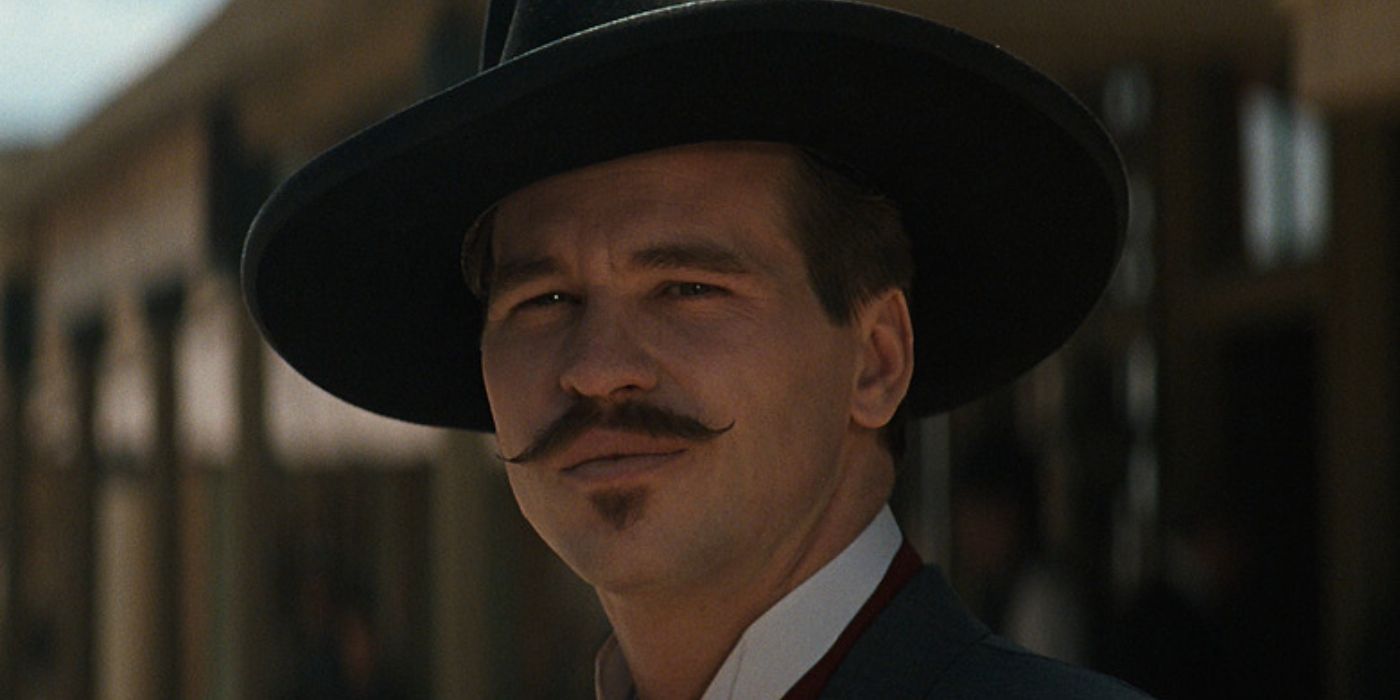
Related
Why Doc Holliday Was Recast in Tombstone
Tombstone wasn’t always a surefire hit, and at one point in its production, the now iconic Western once had a different leading man.
Out of all the films that depict Holliday and the Earps, two stand out: Tombstone and Doc. While Tombstone presents Holliday as the charismatic gunman with a dangerous streak, Doc leans into a softer version of the character. His illness, his fatigue, and his weariness are central to the film, giving him slightly more depth than in Kilmer’s version. Both films show the different sides of Holliday, with Doc also touching upon his backstory in more detail. Between the two, fans already have a complete picture of who Holliday was.
One film gives fans the gunslinger at the height of his myth, the other strips him back to reveal the man underneath. Because of this, there’s no need to reinterpret him again. No reason to risk dulling the impact of what’s already been done with unnecessary retellings. If audiences want to understand Doc Holliday, they don’t need another biopic, they just need to revisit the films that have already told his story. It’s probably a good thing that Renner’s Doc Holliday adaptation never got off the ground. Not because the source material isn’t strong, it is, but because the role has already been played out in ways that would be nearly impossible to top.
Tombstone gave viewers the definitive cinematic Holliday in Val Kilmer, while Doc offered a more introspective take. Between them, there’s little left to be explored. Any new attempt would inevitably feel like a rework, or worse, a watered-down version of what’s already been done better. While Mary Doria Russell’s novels are deserving of praise, adapting them into a traditional biopic feels like the wrong fit in the genre. Audiences don’t need another Western just for the sake of novelty. And chances are, even with the best intentions, a new film would end up being just that.
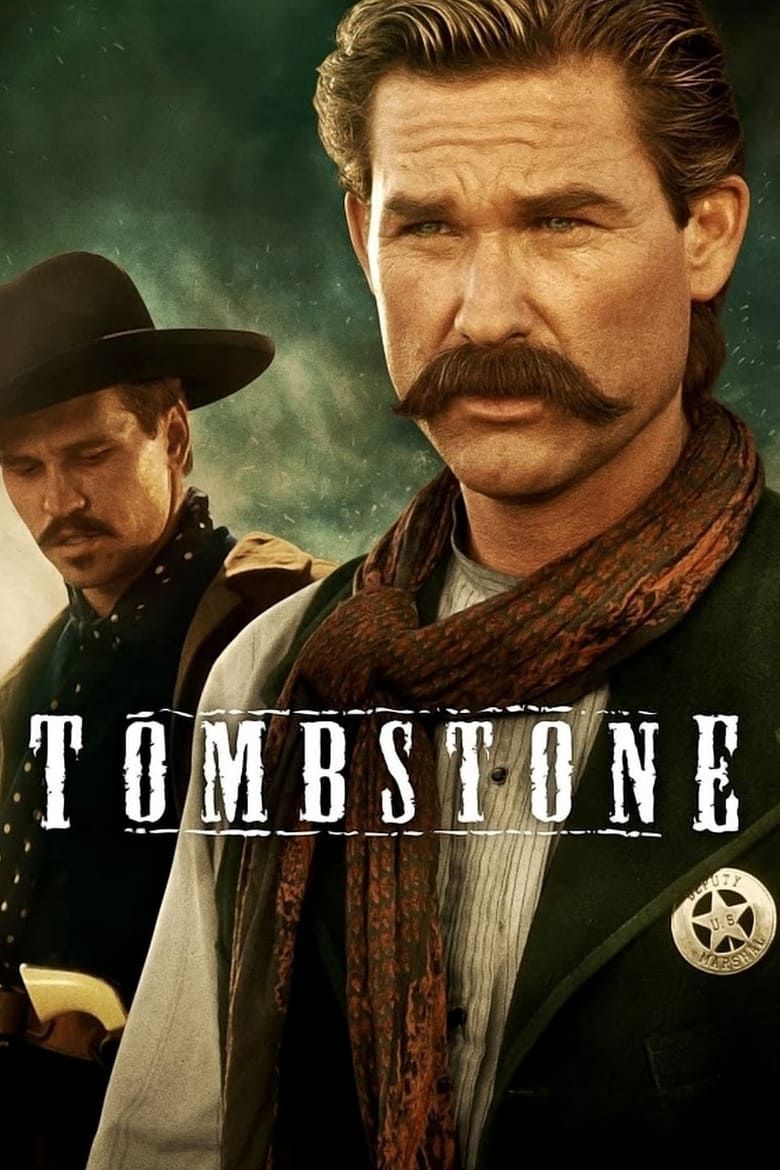
Tombstone
- Release Date
-
December 25, 1993
- Runtime
-
130 minutes
- Director
-
George P. Cosmatos

